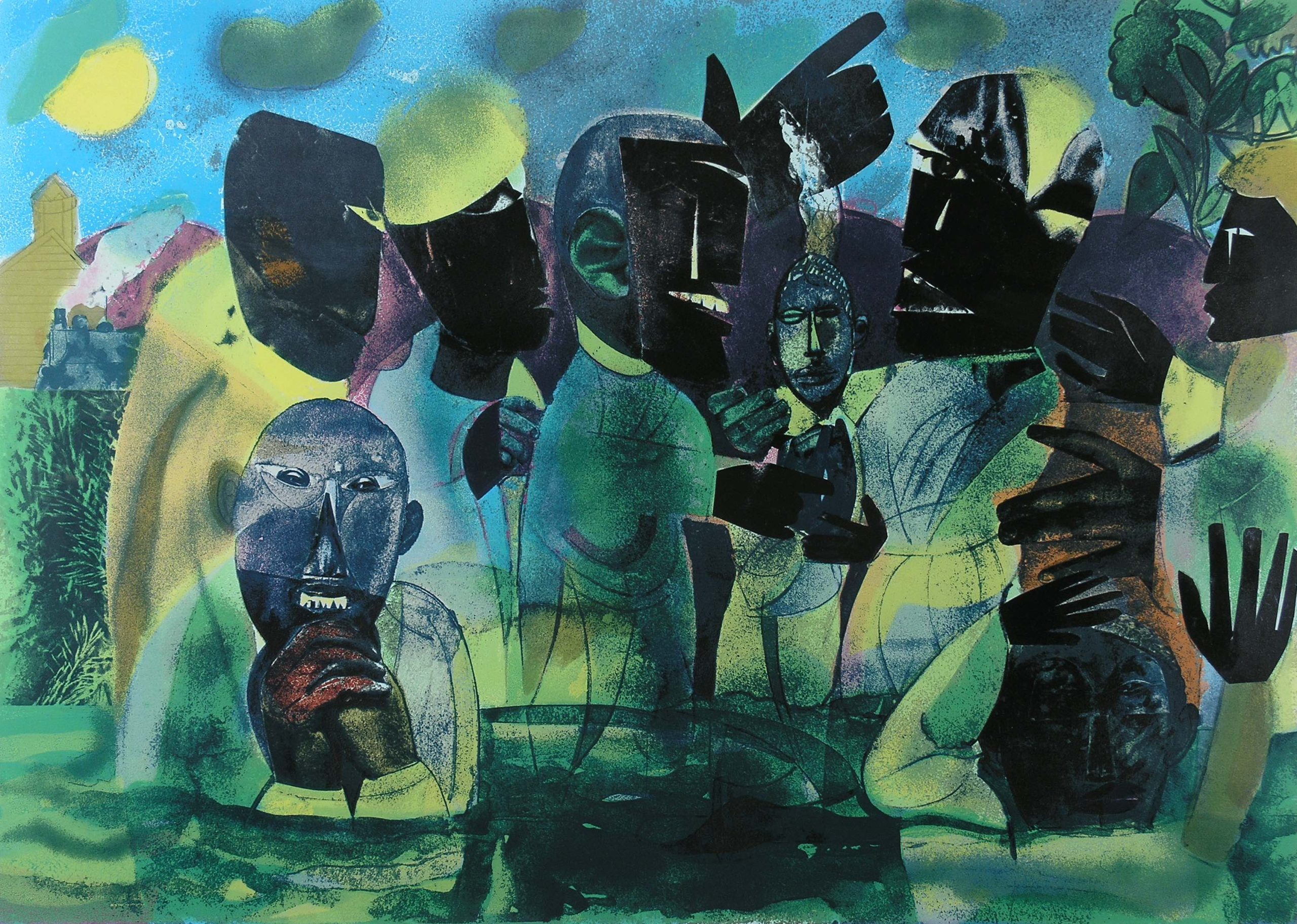
In Common: Romare Bearden and New Approaches to Art, Race, and Economy Explores the Artist as Activist
A new exhibition at The New School highlights Romare Bearden’s (1911–1988) work as an artist, educator, scholar, songwriter, and social activist. Drawing from the collections of the Romare Bearden Foundation, The New School, and private collectors, the exhibition presents a selection of works demonstrating Bearden’s keen exploration of race and racial stereotypes—often taking inspiration from history, literature, the Bible, jazz, and African American communities—alongside artworks from six leading and emerging contemporary Black artists: Black Quantum Futurism, Kahlil Robert Irving, Lorraine O’Grady, Hank Willis Thomas, Mickalene Thomas, and Charisse Pearlina Weston.
Opening on Thursday, November 9, at the Sheila C. Johnson Design Center’s Anna-Maria and Stephen Kellen Gallery at Parsons School of Design, In Common: New Approaches with Romare Bearden combines an exploration of the life and impact of American icon Romare Bearden with contemporary art, live performance, and critical investigation of the intersections of creativity, culture, race, and economy. The opening reception will be held from 6:00–8:00 pm ET at the Kellen Gallery. The exhibition is free and open to the public from November 9, 2023–January 15, 2024, with daily hours of 12:00–6:00 pm ET, and Thursdays late until 8:00 pm ET.
Presented by the Institute on Race, Power and Political Economy (The Institute) and the Vera List Center for Art and Politics at The New School, the Romare Bearden Foundation, and the Institute of Jazz Studies at Rutgers University Newark, the exhibition offers a stirring, multigenerational dialogue on the political agency of art.
“This is not just an exhibition but a call to action,” Henry A. J. Ramos, the project initiator and a Senior Fellow at the Institute on Race, Power and Political Economy, said. “Just as in past eras, like the 1930s and the 1960s, when major dislocations in human relations, politics, and economics compelled creative leaders to use their collective voice to advance the Common Good, we live in such times today. ‘In Common’ is our response to this call to action, providing an opportunity simultaneously to learn from history and to co-create a better course for the future.”
One of our nation’s greatest visual artists and activists, Romare Bearden came of age during the Harlem Renaissance and was a leading voice of mid- to late twentieth-century Black struggles for political and economic justice. In his extensive and wide-ranging work, Bearden addressed the African American community’s experiences with institutionalized racism and poverty in the United States, as well as the resiliency of Black people in responding to inequality and injustice through the power of community, collective action, faith, music, and dance. The exhibition juxtaposes Bearden’s art with contemporary works by artists whose practices and values resonate with those of Bearden, and who pay direct homage to Bearden’s compositions and themes.
“We are pleased to bring Bearden, the great collaborator, to the table with these contemporary voices and art mediums,” Diedra Harris-Kelley of the Romare Bearden Foundation said. “In response to his words, ‘I want to see how life can triumph,’ we offer In Common as one such triumph. We say art is still the most powerful way to survive.”


“Romare Bearden was a local artist with a global audience and global discourse,” Hank Willis Thomas, exhibiting artist, said. “What I love about his work is that he could speak intimately to the human condition and create a context through his collage that expands space and time and references multiple cultural influences all at once…I am often thinking about ways in which the past is present and how, through my practice, I can bring stories together that might seem disparate in a way that future generations can connect the dots.”
“Romare Bearden’s work provides us with a sense of ‘Layer Time,’ a temporal dimension that is like collage layers, each representing a distinct temporal phase,” the artist collective Black Quantum Futurism said. “Bearden’s fluid navigation between media, art, and political activism reflects the interdisciplinary core of our Black Space Agency project.” In addition to this project, the exhibition will host Black Quantum Futurism’s performative lecture titled Layer Time: The Past is Already Rearranged by Our Gaze as part of the symposium on December 1. They added, “[Bearden’s] legacy motivates us to transcend conventional artistic domains, weaving narratives that echo through time and space, paralleling our own journey to unveil and uproot obscured narratives surrounding Black spatial agency and temporal autonomy.”
The three-day symposium, In Common: Romare Bearden and New Approaches to Art, Race & Economy, will take place November 30–December 2 at The New School, and will draw on Bearden’s activist legacy to spotlight the potent, yet still-too-rarely-acknowledged relationships between race, culture, economy, and the Common Good. The symposium will feature contemporary creative works, live performances, and perspectives from socially-conscious, politically engaged BIPOC artists and commentators. Plenary discussions will investigate the themes of purposeful creativity, the artist as activist, BIPOC leadership in creative culture and economy, and much more.
Among the featured symposium presenters and speakers will be three-time Grammy Award winning drummer Terri Lyne Carrington and four-time Grammy-nominated jazz artist Stefon Harris, Pulitzer Prize winning poet and MacArthur Fellow Natalie Diaz, and former Spelman College president Mary Schmidt Campbell.
Additional speakers, performers, and artists at the symposium include: Michael Aghahowa, Dwight Andrews, Rocío Aranda-Alvarado, Aisha Benson, Black Quantum Futurism, Johanne Bryant-Reid, C. Daniel Dawson, Asali DeVan Ecclesiastes, Adrienne Edwards, Nicole Fleetwood, Darrick Hamilton, Diedra Harris-Kelley, Angie Kim, Maurine Knighton, Carin Kuoni, Jessica Lynne, Robert G. O’Meally, Evangeline Ordaz, Eriola Pira, Henry A. J. Ramos, Mary Schmidt Campbell, Fayemi Shakur, Radhika Subramaniam, Salamishah Tillet, Eddie Torres, Yvonne Watson, Jordan Weber, Charisse Pearlina Weston, Renée T. White, Calvin Williams, H. Sharif Williams, and Wayne Winborne.
The symposium is free and open to the public, with pre-registration required.